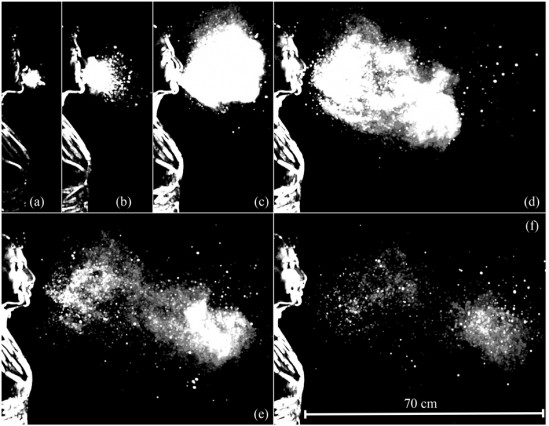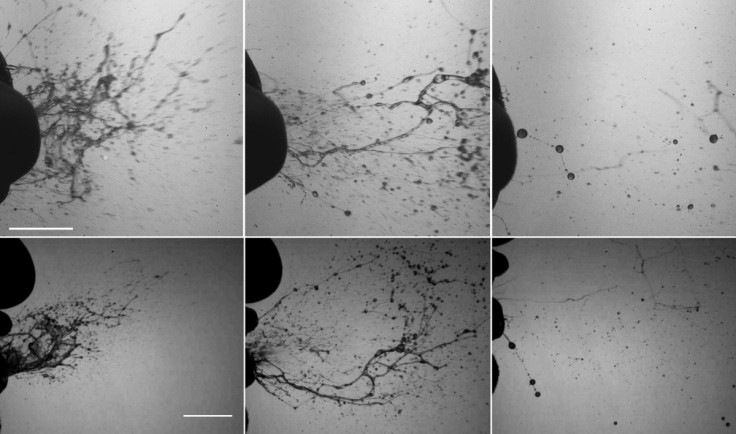What actually happens when you sneeze? Interconnected gloopy fluid shoots from your mouth like a balloon

A sneeze does not simply spray fluid, say researchers. In fact, the saliva shoots out of our mouths in a sheet-like motion, connected through mucus-ey networks, before finally falling as single droplets.
The research, published in the journal Experiments in Fluids, says the popular ideas of sneezing are incorrect, and our sneezes are similar to the inflation of a balloon. The findings lead to new information on stopping the spread of disease, as scientists can identify exactly where someone is at risk of infection when standing near a particularly sneezy person.
The scientists from MIT recorded footage of human sneezes, and showed that immediately after expelling the fluid, the saliva fanned out in the air. It then separated later as the elasticity of the fluid snapped. This action is similar to throwing paint on a canvas, or watching a water bottle being emptied onto the floor.
"What we saw was surprising in many ways," said Lydia Bourouiba, researcher on the study. "We expected to see droplets coming out fully formed from the respiratory tract. It turns out that's not the case at all. And this gives us a good baseline to expand our mechanistic understanding of violent expirations."
The scientists used high-speed cameras to capture the footage of more than 100 sneezes from three volunteers. They tickled the noses of the helpers, who stood in front of a black screen, making them sneeze over and over again.

They found that nearly all of the footage showed a similar pattern. The fluid shot out of the mouth in a thick, gloopy sheet – connected in the same way that stops the contents of a runny nose from just dropping to the floor like a liquid.
This propulsion of gunk begins to inflate as the sneeze simultaneously pushes air into it – expanding like a balloon. Just like that balloon, the fluid reaches a tipping point where it cannot inflate anymore, and 'pops' into thin filaments that go on to form the droplets that hit the ground.
This discovery allows scientists to map the spread of infections, and in particular, identify certain individuals that may be a "super spreader". Every person has different rates of 'elasticity' in their sneeze projectiles. For those that have extra stringy saliva, the spread of their sneezes could go much further than most people – giving them the unwanted title of the super spreader.
"It's important to understand how the process of fluid breakup, or fluid fragmentation, happens," said Bourouiba. "This line of work is opening the way for us to gain insights into the variability between human subjects, and to determine to what extent the breakup process of mucosalivary fluid gives us information on the inner physiology of the host."
© Copyright IBTimes 2025. All rights reserved.






















